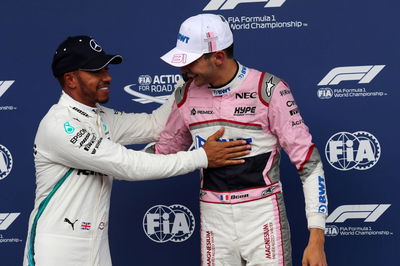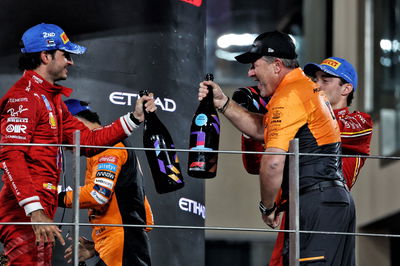The Max Factor: How Verstappen's fans have changed F1
On the drive into Spa for the race on Sunday, it was impossible not to gauge the huge number of fans coming into the circuit in support of one driver.
It’s all just so orange around here.
Alas, the swell in support for Red Bull driver Max Verstappen is not just something specific to the Belgian Grand Prix. It’s been seen across all of the European races for the last couple of years, with the travelling fan club taking over campsites and grandstands to see the Netherland’s favourite son fight at the front of the field.
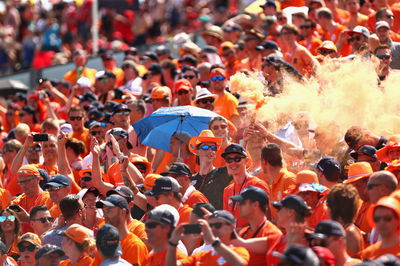
On the drive into Spa for the race on Sunday, it was impossible not to gauge the huge number of fans coming into the circuit in support of one driver.
It’s all just so orange around here.
Alas, the swell in support for Red Bull driver Max Verstappen is not just something specific to the Belgian Grand Prix. It’s been seen across all of the European races for the last couple of years, with the travelling fan club taking over campsites and grandstands to see the Netherland’s favourite son fight at the front of the field.
Tens of thousands of Dutch fans will have made the trip across the border this weekend to cheer on Verstappen. While that figure may dwarf the numbers seen at other races, the number still gets into the thousands for all the other European races. The majority of events are now creating Verstappen-dedicated grandstands to accommodate the support, although one - Silverstone - was known to have turned down an opportunity to do so.
The impact of Verstappen’s fan club can be seen in the boost in European race attendances in recent years. In 2017, the British Grand Prix was the only race not to record a rise in attendance year-on-year. While this widespread rises cannot all be pinned on Verstappen, Hockenheim marketing chief Jorn Teske earlier this year said it was a “massive factor” in the rise in ticket sales for the German Grand Prix.
“We’re calculating about 10,000 Dutch people joining our race,” he said. “More or less we have not a complete grandstand, a Max Verstappen block of the grandstand.” The same was seen in Austria, while there was also a Verstappen block in a grandstand on the main straight in Hungary.
The support for Verstappen is going a long way to helping European races that may have faced uncertainty in recent years secure more stable footing for the future. Spa is perhaps the strongest example, having faced years of questions about its future, only to then enjoy a record crowd in 2017 and agree on a new three-year contract through to 2021 over the summer.
But what is the secret to Verstappen’s popularity? He may be F1’s bright star, but he does not offer the charisma of Red Bull teammate Daniel Ricciardo or the global popularity of Lewis Hamilton. A 2017 fan survey found Verstappen to be the sixth-most-popular driver on the grid, trailing Hamilton, Fernando Alonso, Kimi Raikkonen, Sebastian Vettel, and Ricciardo.
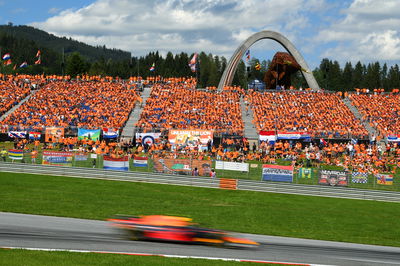
Speaking after his victory in Austria earlier this year, Verstappen was impressed by the support that had turned out for him, but admitted there was a big factor that had boosted the numbers.
“It’s great to see. Of course, we’re not playing in the World Cup, so it’s a bit easier for them to come over here,” Verstappen said.
“But in general, great support. I mean the whole weekend. It was amazing to see so much orange. And then if you win the race and see all the fans lining up there, it’s incredible. And this is in Austria, which is still 10, 11 hours away from Holland. It’s amazing that they all came over here.”
The factor of the Netherlands not qualifying for the World Cup cannot be underestimated in explaining the boost in Verstappen support. As in most countries, football is the most popular sport for Dutch fans, yet the national men’s team is currently in something of a downswing. After finishing second in the 2010 World Cup and third four years later, the Netherlands failed to qualify for the 2018 edition in Russia, having also not taken part in the European Championships two years earlier. Beyond the national team, club sides such as Ajax, Feyenoord and PSV Eindhoven aren’t enjoying massive amounts of success in European competitions.
It’s a difficult time for Dutch fans to get behind the national football team, so their attention is drawn elsewhere: to Verstappen. It may be merely coincidental his rise in F1 has come at the same time as the football team’s struggles, but it is certainly a factor in the boom in popularity Verstappen has enjoyed.
The surge in popularity has been such that suggestions over a revival of the Dutch Grand Prix, which last ran in 1985 at Zandvoort. An unofficial petition to revive the Dutch Grand Prix has gained more than 100,000 signatures. FIA race director Charlie Whiting is known to have conducted a number of checks at the Assen circuit used for MotoGP, giving advice on what changes need to be made to bring it up to F1 standards.
Meetings between hopeful promoters and officials from FOM have taken place in recent months, with other suggestions for the event including a street race in either Amsterdam or Rotterdam, both in-keeping with Liberty’s vision for the future of the sport.
While a Dutch Grand Prix would be lucrative given the Verstappen effect, the impact it would have on the rest of the calendar must also be considered. Spa would most likely be worst hit, given it is the de facto race for fans to flock to, but even the likes of Germany and Austria would suffer. If Verstappen fans have a race on their doorstep, will they be as likely to check out different circuits around Europe? Would the addition of one race to the calendar be worth the dip many others may face?
Perhaps the most remarkable fact about all of this is - as is often the case with Verstappen - is his age. He’s still just 20 years old. And yet the hopes of a nation are resting on his shoulders in the sporting sphere.
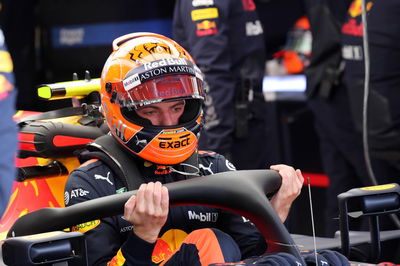
But Verstappen doesn’t feel any pressure from it all. As he has done throughout his F1 career to date, he’s simply taking it in his stride.
“Of course always great to have that support. But it’s not going to change me as a person at all,” Verstappen said.
“I try to just do the best possible job I can on the track, and they seem to like it, which is of course great. I just hope that tomorrow of course we can have a good race for them.”
He’s never even completed a lap inside the top four at Spa in F1, making it one of his least-successful tracks in F1. But starting seventh on the grid, Verstappen has a good chance to get in the fight for the top five.
And if he hits the podium? There will be one hell of a party in the orange-clad campsites tonight.
